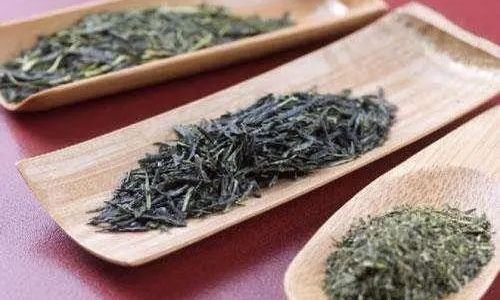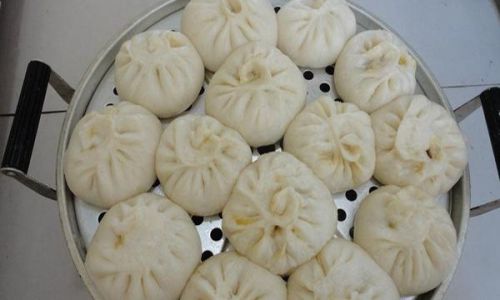Introduction
Oranges, with their vibrant hue and tangy sweetness, are among the world’s most beloved fruits. Whether enjoyed as a refreshing snack, a zesty ingredient in recipes, or a concentrated source of vitamin C, their versatility and nutritional benefits make them a staple in households globally. However, the question of how to store oranges properly—specifically, whether to refrigerate them or leave them at room temperature—remains a subject of debate. This article delves into the science, practicality, and nuances of orange storage, exploring the impacts of temperature, humidity, and environmental factors on their freshness, flavor, and nutritional value. By examining research, expert opinions, and real-world applications, this analysis aims to provide a definitive guide to preserving oranges at their peak quality.

The Science of Fruit Ripening and Storage
To understand the optimal storage conditions for oranges, one must first grasp the biological processes governing fruit ripening. Like all climacteric fruits, oranges undergo a series of biochemical changes post-harvest, driven by ethylene gas—a plant hormone responsible for initiating ripening. Ethylene promotes the conversion of starches into sugars, the softening of cell walls, and the degradation of chlorophyll, which gives fruits their characteristic color changes (e.g., green to orange). However, oranges are unique among citrus fruits: they are non-climacteric, meaning their ripening process slows significantly once detached from the tree. This distinction is critical because it influences how storage conditions affect their shelf life.
At room temperature (typically 68–72°F or 20–22°C), oranges continue to respire—a metabolic process where they consume oxygen and release carbon dioxide, water, and heat. Respiration rates increase with temperature, accelerating degradation processes such as water loss, sugar breakdown, and texture softening. Conversely, refrigeration (32–41°F or 0–5°C) slows respiration, reducing the rate of these changes and extending freshness. Yet, cold storage is not without its risks, as excessive moisture loss or chill injury can compromise quality.
The Case for Refrigeration
Refrigerating oranges is a common practice in many households, and for good reason. Cold temperatures significantly slow the enzymatic reactions that lead to spoilage. Studies indicate that refrigerated oranges retain their vitamin C content, firmness, and juice quality for up to four weeks, compared to just one to two weeks at room temperature. The crisper drawer of a refrigerator, which offers slightly higher humidity (around 95% relative humidity), is particularly effective, as it minimizes dehydration—a primary cause of shriveling and texture loss.
Moreover, refrigeration inhibits microbial growth. Bacteria and molds thrive in warmer environments, and while oranges’ thick peels provide some protection, cuts, bruises, or high-humidity conditions can create entry points for pathogens. A 2018 study by the University of California, Davis, found that refrigerated oranges had a 40% lower risk of mold development compared to those stored at room temperature. This is especially relevant in humid climates, where ambient moisture accelerates spoilage.
Critics of refrigeration argue that cold temperatures can dull flavor and cause peel discoloration. While it’s true that prolonged exposure to temperatures below 32°F (0°C) may lead to chill injury—manifested as brown pitting or lesions on the peel—modern refrigerators set to 40°F (4°C) pose minimal risk. Any slight flavor changes are often negligible, as the inner fruit remains largely unaffected. To mitigate peel damage, storing oranges in perforated plastic bags or mesh produce containers in the refrigerator can maintain humidity while preventing excess moisture buildup.

The Merits of Room Temperature Storage
Despite the benefits of refrigeration, many advocates prefer keeping oranges at room temperature, citing accessibility and perceived flavor enhancement. Oranges stored at 68–72°F (20–22°C) release subtle aromatic compounds that may intensify their citrus scent, making them appear more fragrant. Additionally, room-temperature oranges are easier to juice, as cold temperatures can temporarily stiffen the peel and pulp, requiring slightly more effort to extract juice.
From a practical standpoint, leaving oranges on countertops or in fruit bowls encourages consumption, as they remain visible and within reach. This is particularly advantageous for households that consume oranges within a week of purchase, as dehydration and spoilage are less likely to occur in such a short timeframe. However, this method is ill-suited for long-term storage, especially in dry climates or during winter months when indoor heating reduces humidity, accelerating water loss.
Another consideration is ethylene sensitivity. While oranges produce minimal ethylene compared to fruits like apples or bananas, storing them near ethylene-emitting produce can hasten spoilage. At room temperature, ethylene diffusion is faster, increasing the risk of cross-contamination. Thus, if opting for countertop storage, it’s wise to keep oranges isolated from other fruits.
Factors Influencing the Decision
The choice between refrigeration and room temperature storage hinges on several variables:
-
Orange Variety: Thick-skinned varieties like navel oranges and Valencia oranges tolerate refrigeration better than thin-skinned types (e.g., mandarins or blood oranges), which are more prone to peel damage.

-
Climate and Humidity: In arid regions, room-temperature storage may lead to rapid dehydration, making refrigeration preferable. Conversely, in humid areas, refrigeration helps prevent mold.
-
Storage Duration: For short-term use (less than seven days), room temperature is acceptable. For extended periods (beyond two weeks), refrigeration is advised.
-
Household Habits: Families that consume oranges daily may prefer the convenience of a fruit bowl, while occasional eaters benefit from refrigeration to avoid waste.
Expert Recommendations and Studies
Agricultural experts generally endorse refrigeration as the superior method for preserving oranges. The U.S. Department of Agriculture (USDA) recommends storing citrus fruits at 38–40°F (3–4°C) with 90–95% humidity to maximize shelf life. Similarly, a 2020 study published in the Journal of Food Science concluded that refrigerated oranges maintained higher levels of ascorbic acid (vitamin C) and antioxidants over 28 days compared to those stored at room temperature.
However, some chefs and culinary enthusiasts advocate for room temperature storage to enhance flavor complexity. Allowing oranges to warm to room temperature before consumption can make the flesh slightly softer and juicier, which is desirable for eating raw or in salads. This practice, however, does not negate the need for refrigeration during storage—merely a brief warming period before use.

Practical Tips for Optimal Storage
Regardless of the chosen method, adhering to best practices ensures oranges remain fresh:
-
Refrigeration Guidelines:
- Place oranges in the crisper drawer to maintain humidity.
- Use perforated bags to prevent moisture accumulation.
- Avoid storing near ethylene-producing fruits (e.g., apples, avocados).
-
Room Temperature Guidelines:
- Keep oranges in a cool, dark place away from direct sunlight.
- Use a breathable container (e.g., a woven basket) to prevent mold.
- Monitor for signs of spoilage (mushy spots, off-odors).
-
General Tips:
- Wash oranges only before use to prevent premature spoilage.
- Check for damaged fruit, which can spoil quickly and affect others.
- Consider freezing juice or zest for long-term preservation.
Addressing Common Misconceptions

-
“Refrigeration makes oranges tasteless”: While cold temperatures can temporarily suppress aromatic compounds, oranges return to their original flavor profile after warming to room temperature. Any perceived blandness is often psychological or due to overripeness.
-
“Oranges should never be refrigerated”: This myth persists from older refrigeration practices, but modern appliances with precise temperature controls mitigate risks like chill injury.
-
“Room temperature storage is always better”: While convenient for short periods, it sacrifices longevity and increases spoilage risks in certain climates.
Conclusion
The debate over refrigerating oranges versus storing them at room temperature ultimately hinges on individual needs and circumstances. Refrigeration offers unparalleled longevity, preserving nutritional quality and preventing microbial growth, making it ideal for infrequent consumers or those in humid/arid climates. Conversely, room temperature storage suits daily users who prioritize immediate accessibility and subtle flavor nuances. By understanding the science behind fruit preservation and adapting practices to lifestyle and environment, anyone can enjoy oranges at their freshest, juiciest best. Whether chilled in the crisper or displayed in a bowl, the key lies in balancing practicality with preservation—ensuring this citrus gem remains a delightful part of every meal.






0 comments